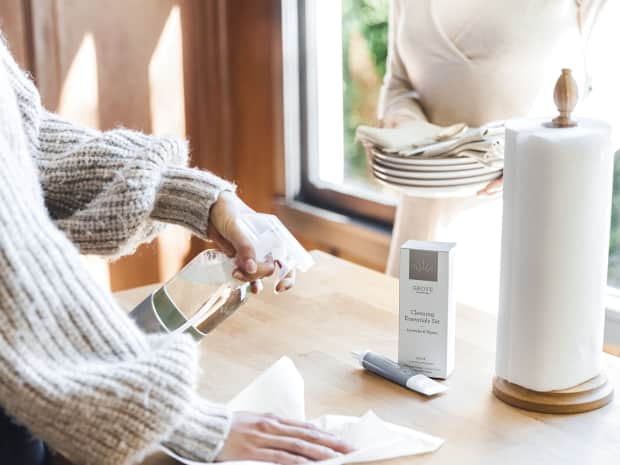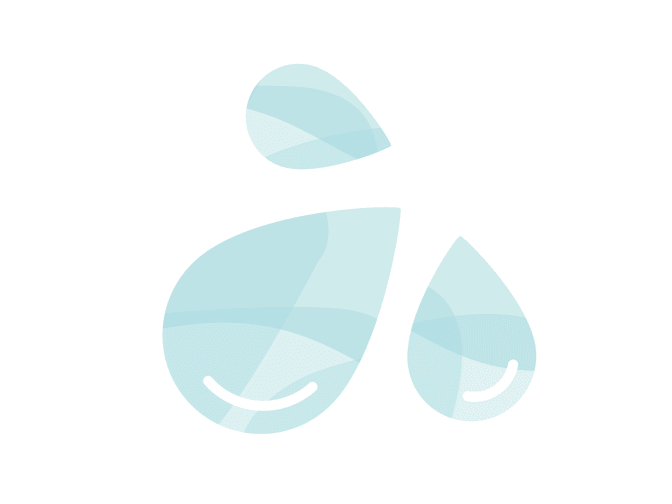
COVID-19 Cleaning Checklist: The Germiest Items Most People Forget
The most overlooked things in your home you should be cleaning right now.
Read More


Last updated: June 12, 2022
Got laundry? Ditch the warm water cycle and see how switching to a cold water wash helps you save money, reduces your carbon footprint, and keeps your clothes looking their best for longer.
Old habits can be hard to break — like more than 60% of Americans still washing their laundry in warm water. We’re guilty of it, too! The mindset that warmer temperatures result in cleaner clothes has been passed from one generation of laundry doers to the next. But with the advent of High Efficiency (HE) washers and specially formulated laundry detergents, low-temperature wash cycles are way more effective than they were ten years ago.
Consider this: around 90% of the energy used to wash a load of laundry goes to heating up the water, and just making the switch from hot to warm water can cut your energy usage in half. Now imagine if you switched to cold water. Not only would it help the environment, but it would also save you money — and who doesn’t like the sound of that?
Read on for the lowdown on making the switch to cold water, with tips from Clement Choy, Ph.D., Grove Collaborative fellow and senior director of science and formulation.

Water temperature is simply a measure of how quickly molecules move: the warmer the water, the faster the particles zoom around. But temperature is only one of four components used to clean clothes effectively. You also need to factor in overall wash time, the efficiency of your machine, and the type of laundry detergent you're using.
"The whole idea of having an HE machine is that you're cutting down on the water, increasing the concentration of the detergent, and it runs on a longer cycle," says Choy. "Even without an HE machine, using a more concentrated detergent with reduced water over a longer washing time all drives to the fact that you can get by with colder temperatures."
Expert Tip
American households do about 300 loads of laundry every year, and most of the energy our washing machines use goes towards heating the water. "Even though HE machines are almost always a longer cycle — at least 45 minutes to an hour, and sometimes beyond — the energy consumption of running an hour is far less than heating up the water," says Choy.

Cold-water laundry detergents are specially formulated with enzymes and surfactants that work exceptionally well in temperatures traditionally reaching as low as 60°F (although today, they can work in temperatures as low as the 40s). These enzymes effectively break down stains to allow surfactants and functional ingredients to work their magic.
"We try to use ingredients, surfactants and otherwise, that are at least as effective in cold water as they are in warm water, and we optimize the enzyme system and maximize the percentage so we're combining the enzymes and the dosage," says Choy.
Each enzyme targets a different kind of stain:
Choy also notes, "Enzymes are a key part of the equation. But other drivers also help cold-water washing, anything from placing less in your machine to increasing wash times."
Grove Tip
Need more reasons to switch to cold water? You got it. A sustainability report from The Cleaning Institute says that a household could cut its emissions by 864 pounds of carbon per year by washing four out of five loads in cold water.
Here’s a handy list of the typical temperatures your washing machine is running at for cold, warm, and hot cycles. Keep your washer set to at least 60°F for cold water washes — clothes won’t get as clean at lower temperatures.
Cold water: 60 - 80°F
Warm water: 90 - 110°F
Hot water: 120°F or above
Use cold water for any load you’d typically use warm or hot water for, including whites. Fun fact: dark colors, bright colors, and colors with a tendency to bleed actually prefer cold water. Delicate fabrics such as lace and silk also favor cooler, gentler temperatures. Colder temps protect clothes from fading, shrinking, and transferring color to other garments while washing.
A detailed study by researchers at the University of Kentucky found that cold water resulted in the lowest degree of pilling, too. Colorfastness of jeans and khakis is highest in cold water, and cold-water loads exhibited the highest degree of smoothness for reduced wrinkles.
You might be surprised to learn that not all stains respond well to warmer water. Warmer temps often set stains into fabric, making them impossible to remove. Enter our eco-friendly hero, cold water. It removes all kinds of stains including grass, blood, sweat, and makeup. Cold water also prevents stains from setting in and becoming permanent.
The cold-water process will remove dirt, stains, and some bacteria from a load of laundry, but it doesn’t kill germs. Don’t give up on cold water just yet! Most water temps — even hot water cycles — don’t kill the molds and organisms responsible for respiratory infections, colds, and the flu. Running your dryer on a high-heat setting for at least a half an hour is the best way to kill all those icky microorganisms. This method also kills dust mites as well as lice.

The most overlooked things in your home you should be cleaning right now.

Our handy guide to everything you need to know to keep you and your family healthy and germ-free.

How to properly wear a face mask, clean a cloth face covering, transition to sustainable, eco-friendly mask options.

How to clean and disinfect your home to prevent and reduce the spread of germs and bacteria.